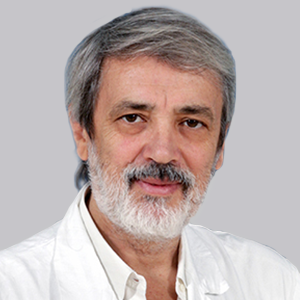Findings from a cross-sectional diagnostic accuracy study revealed daytime continuous polysomnography (D-PSG) as a highly reliable diagnostic tool for identifying narcolepsy type 1 (NT1) in pediatric patients. These findings suggest that D-PSG, an alternative cost-effective and feasible procedure, could significantly reduce diagnostic delay in pediatric patients with NT1. Investigators noted that further research is needed to confirm its validity.1
Among 200 pediatric patients, group 1 (group 1, n = 133) reported area under the receiver operating characteristic (ROC) curve totals of 0.91 (95% CI, 0.86–0.96) for number of sleep-onset REM periods (d-SOREMPs), 0.81 (95% CI, 0.74–0.89) for the number of spontaneous naps (dn-NAPs), and 0.70 (95% CI, 0.60–0.79) for total sleep time. In group 1, a daytime SOREMP count of at least 1 (sensitivity, 95%; specificity, 72%) and a total sleep time above 60 minutes (sensitivity, 89%; specificity, 91%) identified NT1 d-SOREMPs with high reliability (AUC ROC, 0.93; 95% CI, 0.88–0.97). These results were confirmed in group 2 (group 2, n = 67), the validation group, demonstrated by an AUC of 0.88 (95% CI, 0.79–0.97).
Top Clinical Takeaways
- Daytime continuous polysomnography (D-PSG) shows potential as an accessible and reliable diagnostic tool for narcolepsy type 1 (NT1) in pediatric patients.
- The combination of daytime sleep-onset REM periods and total sleep time in D-PSG offers a robust and efficient means of early NT1 identification, with implications for reducing diagnostic delays.
- The study recommends further validation of D-PSG in home monitoring settings and highlights the need for alternative diagnostic procedures to address delayed and underdiagnosis of NT1 in pediatric patients.
“Our study indicates that D-PSG can be used to identify NT1 in the differential diagnosis of suspected narcolepsy among children and adolescents. We found that the occurrence of at least 1 d-SOREMP, with or without more than 60 minutes of d-TST, is an appropriate threshold with accuracy that is not significantly different from the gold standard MSLT,” senior author Giuseppe Plazzi, MD, PhD, professor of neurology at the University of Modena and Reggio Emilia, and colleagues wrote.1 “Although no statistically significant differences were noted in the comparison of this potential diagnostic modality and the current PSG-MSLT standard, our approach offers the benefit of expanding diagnostic prospects with a simplified procedure that is applicable outside the sleep laboratory and that could be added to the current diagnostic standard.”
READ MORE: Once-Nightly Sodium Oxybate Effective in Both Narcolepsy Type 1 and 2
In the study, investigators randomly split pediatric patients aged under 18 years (NT1, n = 112; other hypersomnias including narcolepsy type 2 and idiopathic hypersomnia, n = 25; and subjective excessive daytime sleepiness, n = 63) into 2 groups. Participants in group 1 were for the identification of diagnostic markers while group 2 was used for the validation of such detected markers. The data collected from the D-PSG included the number of spontaneous naps, total sleep time, and d-SOREMP. D-PSG data were tested against CSF hcrt-1 deficiency, which is considered a measure for NT1 diagnosis, as the gold standard using ROC curve analysis in group 1. Additionally, investigators assessed the ROC diagnostic performances of single and combined D-PSG parameters in group 1 and validated in group 2.
“In clinical settings with high pretest probability, these parameters confirm the presence of NT1, whereas in clinical settings with low pretest probability, they can rule out NT1. This indicates that the procedure could be valuable for cases of patients who are not willing or able to comply with in-laboratory evaluation,” Plazzi, also the director of the Sleep Disorders, Narcolepsy and CNS Hypersomnias Center of the IRCCS – Institute of Neurological Sciences of Bologna, et al noted.1 “Moreover, considering the increased miniaturization of hardware, at home D-PSG recordings, with or without night-time recordings, are likely to be increasingly adopted instead of the MSLTs because they provide a more naturalistic assessment of daytime sleepiness, the major symptom of hypersomnia.”
With these findings, the diagnostic utility of D-PSG for pediatric patients were expanded, as formal diagnosis of NT1 may be potentially extended outside the sleep laboratory.2 The authors noted that the recording also captures neurophysiologic disease markers in a setting that may be more comfortable and realistic for pediatric patients. In addition, it can be applied to other pediatric neurology settings, the authors noted, by expanding the use of ambulatory EEG monitoring with a couple of additional recording channels and being applicable to patients who do not comply with the procedures in the laboratory.
All told, limitations of the study included that the data was analyzed from a single center and that methodology used needs to be confirmed in larger multicenter studies. Despite D-PSG recording in “free-running” conditions being more naturalistic compared with conventional in-laboratory procedures, authors noted that the clinical setting is different from daily life. Additionally, a comparison with home monitoring is needed prior to extending the application of the findings to the habitual setting of pediatric patients.
“We have demonstrated the usefulness of D-PSG for the diagnosis of NT1 in pediatric patients. Extending sleep monitoring techniques to in-field assessment will allow for a faster recognition of this challenging and disabling disease, will mean that less time will pass before children with NT1 and adolescents are able to access disease-modifying treatments, and ultimately improve patient-centered interventions,” Plazzi et al noted.1 “Moreover, deep learning methods applied to daytime and night-time sleep obtained using 24-hour PSG recordings will lead to a combination of diagnostic parameters that are useful to diagnose NT1 and to increase our knowledge of central disorders of hypersomnolence in children and adolescents.”
REFERENCES
1. Pizza F, Vignatelli L, Vandi S, et al. Role of Daytime Continuous Polysomnography in the Diagnosis of Pediatric Narcolepsy Type 1. Neurology. 2023;102(1). doi: 10.1212/WNL.0000000000207815
2. Pizza F, Moghadam KK, Vandi S, et al. Daytime continuous polysomnography predicts MSLT results in hypersomnias of central origin. J Sleep Res. 2013;22(1):32-40. doi:10.1111/j.1365-2869.2012.01032.x



